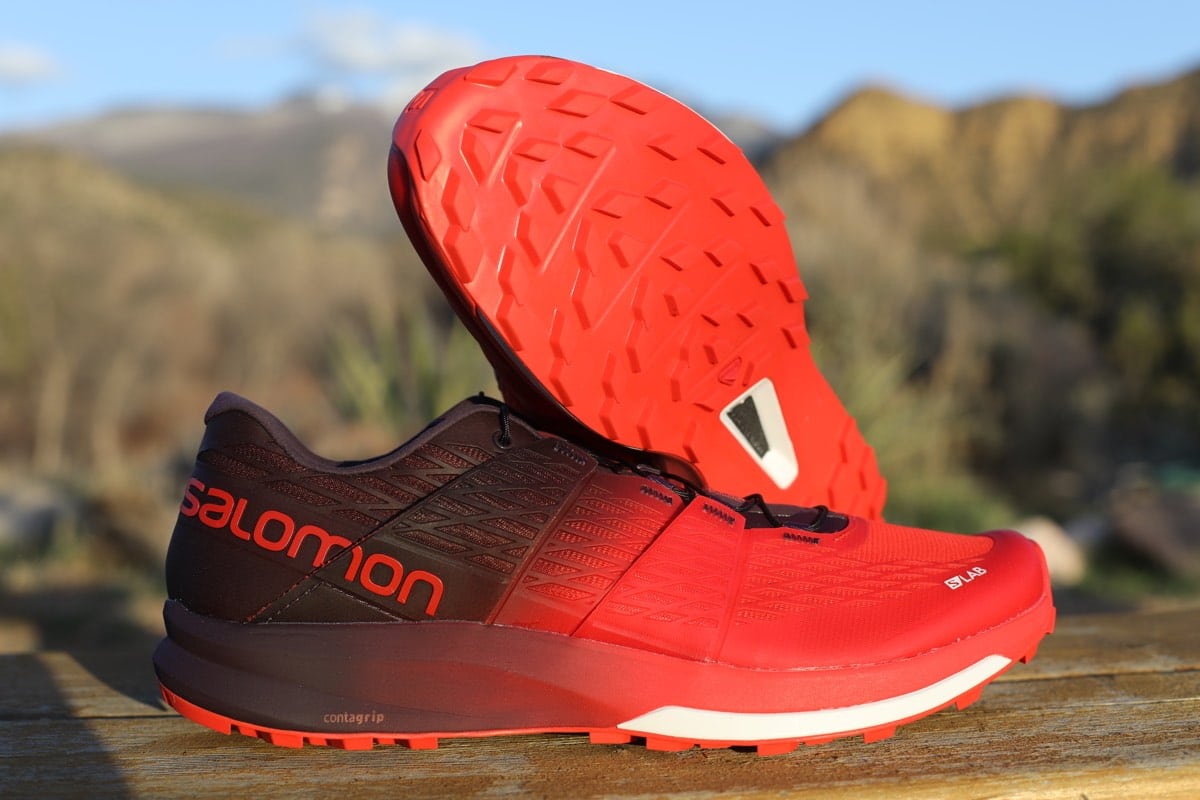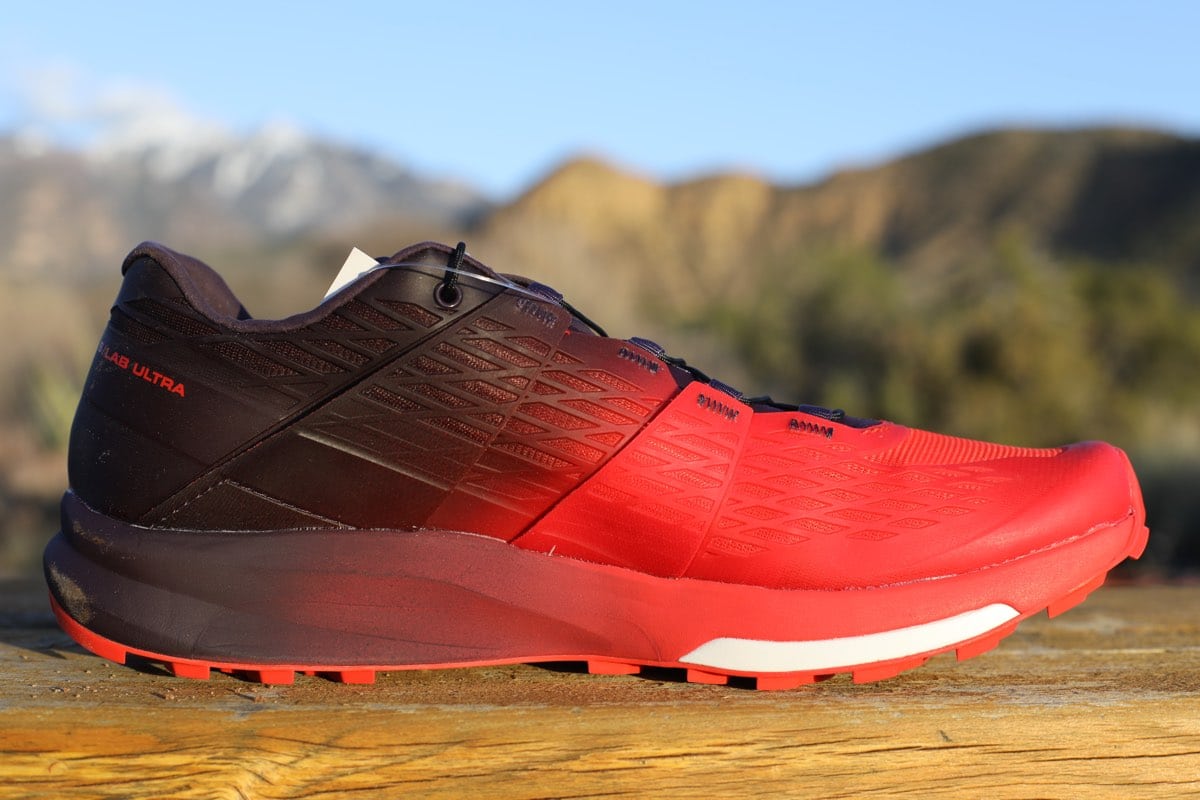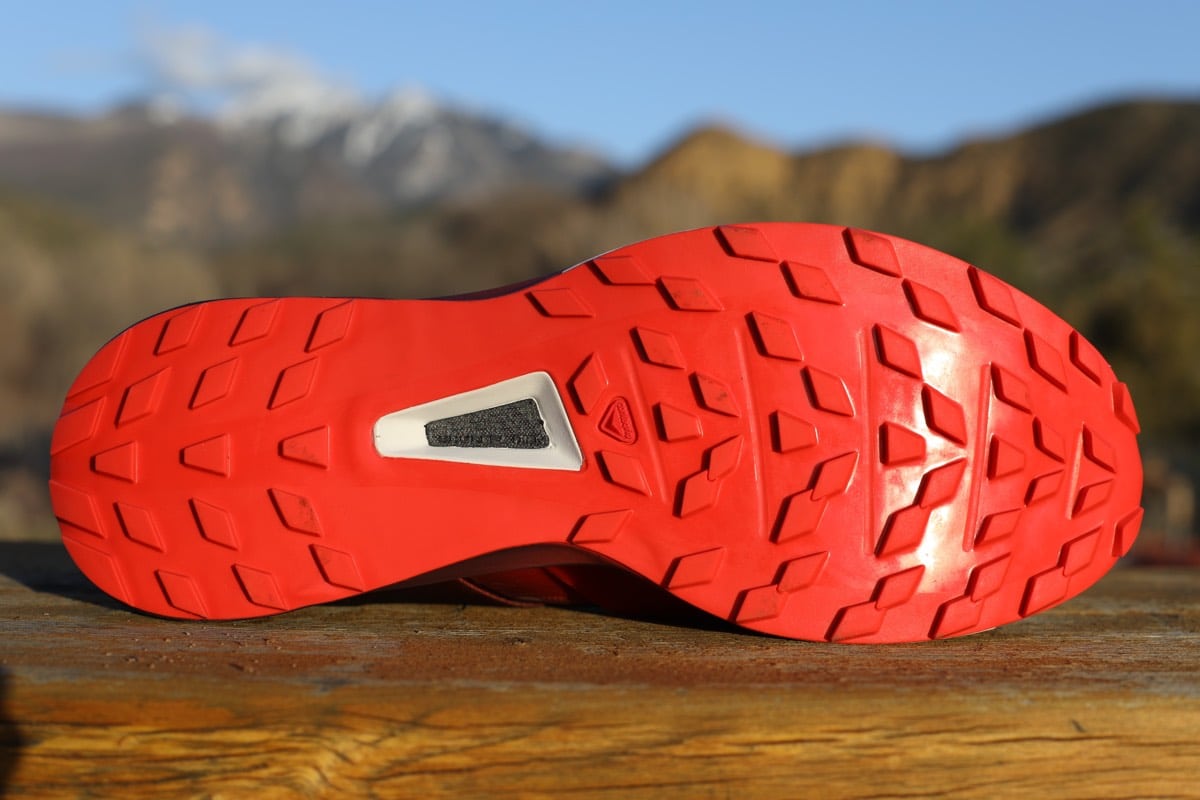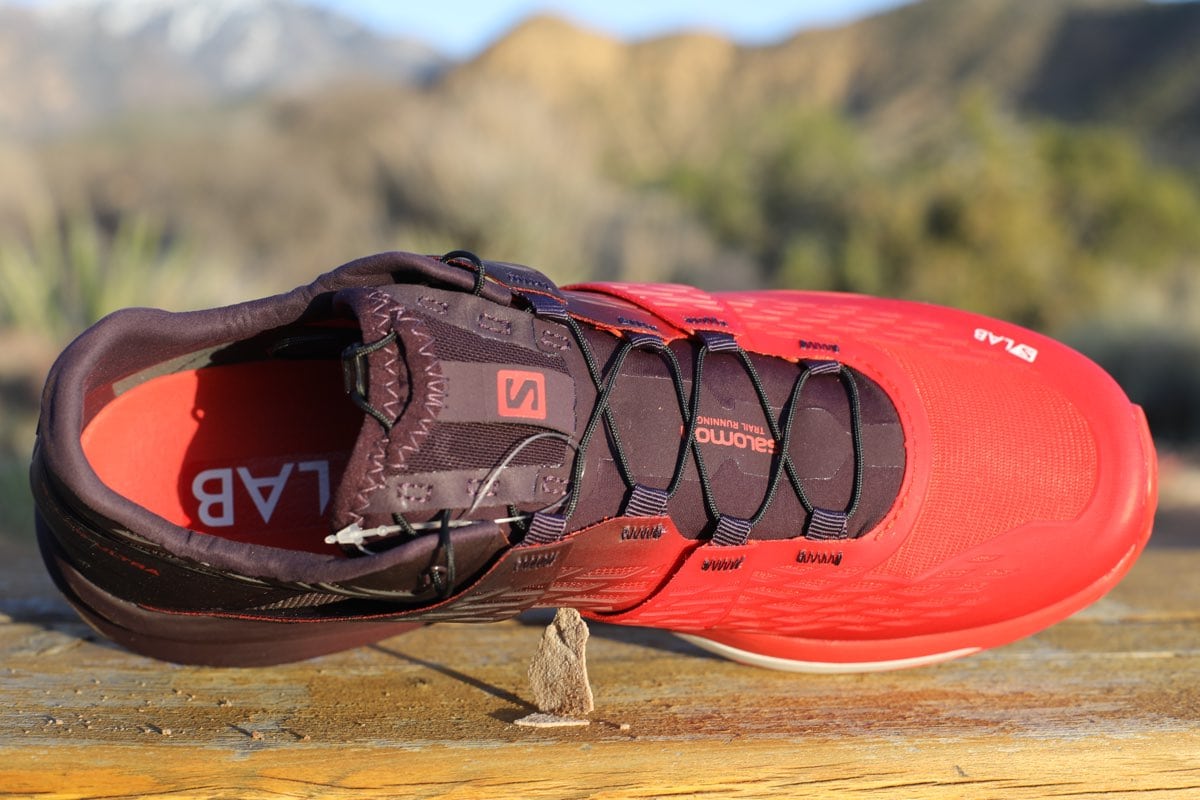For the latest on the Salomon S/Lab Ultra, you can read our Salomon S/Lab Ultra 3 v2 review.
Our Favorite Trail Running Shoes
Check out our Best Trail Running Shoes article to learn about our current favorite trail running shoes!
Salomon S/Lab Ultra Review
In terms of pure trail running aesthetics, Salomon seems to both stick to its original design principles and lead the pack in cutting-edge design in a small industry that seems to be devolving into early 1990s beach wear. With a glance, and from afar, you can pick out their footwear and apparel. While I highly regard their shoe designs, technical features, and durability, I’ve never been able to wear them for ultra distances. This has nothing to do with Salomon shoes and everything to do with my mangled, spreading, and slightly arthritic feet. That said, I know I’m not alone and that others have struggled in Salomon trail running shoes for long ultramarathon distances, too.
The release of the Salomon S/LAB Ultra ($180) this spring had my hopes up. You see, my complaints with Salomon have been twofold; narrow toeboxes and very firm forefoot cushioning. The S/Lab Ultra, which was designed with input from François D’haene, was reputed to solve both of these issues. Upon receiving the shoe for testing, I struggled during the first couple of runs. While the forefoot cushioning was delightful, the toebox width still seemed to be an issue… until the shoe really broke in around 30 miles. What follows is what I liked about this shoe as well as areas for improvement.
Salomon S/Lab Ultra Upper
Having tried many S/Lab shoes, I’d come to expect the open and airy mesh that comes in these lightweight, race-oriented models. With the S/Lab Ultra, Salomon decided to completely abandon the design of last year’s S/Lab Sense Ultra and create an upper with a lot of durable, welded-on overlays. This design change, as well as additional cushioning, added on a full ounce to the shoe but created durability in spades. The S/Lab Ultra retains the design features we expect from a S/Lab shoe including Endofit, a lace garage, and the Kevlar Quicklace system, but seamless Sensifit overlays, which are loose overlays that tighten with the lacing around the midfoot, are a new addition. While this feature didn’t bother me, it did collect some mud, a stick, and seemed duplicative given Salomon’s über-locked-down inner Endofit.
The tongue is extra thick, compared to lighter-weight Salomon models, and gusseted, which did help keep a lot of sand and mud out of the shoe. I loved the heel cup and collar, which are soft at first impression, but really conform to the heel and keep it locked down when climbing steep inclines. Overall, this is the same locked-down Salomon fit that you’ve come to expect, with a slightly wider toebox. While I certainly wouldn’t consider this toebox wide by any means, it compares more directly to a New Balance RC 1400 or Nike Terra Tiger 4, and is a bit wider than any S/Lab shoe in the past.
Salomon S/Lab Ultra Midsole
As with any Salomon shoe, I’ve come to expect a responsive, and even hard, underfoot cushioning, which is wonderful for faster-paced running. My problem has always been that as I get into the later stages of a race or training run, even 50k, my forefoot is usually begging for mercy due to the lack of cushioning. Salomon addresses this in the S/Lab Ultra by employing Energy Cell+ foam in the forefoot, which is encased in their usual dual-density EVA foam. This addition of a softer and very resilient foam is a game changer in my opinion and allowed me run a 100k with 16,000 feet of gain without a shoe change.
Other important stats include a 8mm drop (26mm and 18mm) and a healthy stack height aimed at the 100-mile distance. Profeel Film continues to provide great protection in Salomon shoes, and with the S/Lab Ultra this minimal but protective rock plate does a great job.
Salomon S/Lab Ultra Outsole
I’ve put over 250 miles on the Premium Wet Traction Contagrip outsole on this shoe, and it barely shows a mark. Its traction on wet surfaces is remarkable, and this was demonstrated while running through tall and wet grass down a forty-degree hill interspersed with boulders. I never felt any slippage on the wet surface and whenever I needed the shoe to dig in to go over, or around, a boulder the outsole grabbed perfectly. Other runners were sliding and falling while I felt I had full control. I don’t attribute this to my downhill running abilities, which are regularly chided by my peers, but rather the confidence inspired by this outsole. With minimal lugging, the Contagrip outsole seems to grab onto everything. I put it through six-hour hill climbs in sloppy mud, snow slogs with icy creek crossings, as well as bone-dry, rocky, and technical training runs. This outsole does it all.
Salomon S/Lab Overall Impressions
The S/Lab Ultra is a 10.7-ounce shoe with an 8mm drop that is aimed at taking on the 100-mile distance. This is, by far, the most protective S/Lab shoe I’ve ever worn and I have confidence that this shoe would last well past 500 miles, which could help make up for the $180 price tag. While the fit, traction, and cushioning are more ample than any Salomon shoe I’ve worn, this is still a shoe for runners with a narrower forefoot. I was able to get away with racing a 100k in this shoe by wearing very thin running socks, but toward the later stages of the race, I felt my feet swelling against the walls of the toebox.
For Salomon runners, this shoe will definitely fit in your quiver and will likely become your ultra shoe of choice. I think that Salomon could do away with the Sensifit foot wraps and concentrate on lightening the upper while maintaining an already-perfected midsole and outsole. Of course, what I would like to see is for Salomon to widen the toebox of this shoe or offer widths that would accommodate more runners. Overall, what you get with the S/Lab Ultra is a supremely engineered shoe with great function and aesthetics that can take on the gnarliest terrain at any distance.
Call for Comments (from Meghan)
- Have you run in the Salomon S/Lab Ultra? And have you raced long distances in it? What types of mileages work for your feet in these shoes?
- What do you think about the model’s technical features, like its upper and outsole? How do they perform for you?
[Editor’s Note: If you’re affiliated (i.e., an employee, ambassador, etc.) with a shoe brand, please share your relation in each of your comments on this article. Thanks!]





